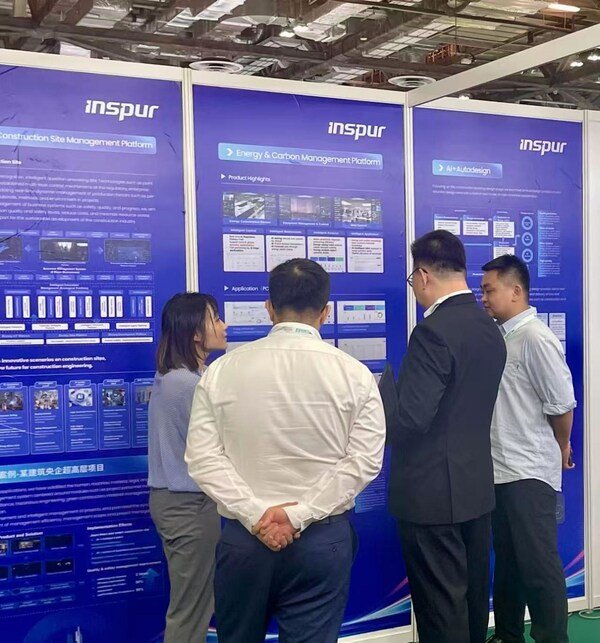Tools & Platforms
Controversial US budget bill is now law; here’s what it means for tech – Computerworld

And despite the removal of the AI regulation ban, Bickley said, “it does signal that Washington is seriously considering a national AI framework. Tech leaders investing in genAI today should plan for a regulatory layer tomorrow, which will likely focus on explainability, auditability, and training data integrity.”
Permanent R&D and capital expensing provisions could turn the tax code into a “strategic lever,” he noted. “CIOs and CTOs now have a clear financial incentive to anchor AI training, cloud deployment, and cybersecurity tooling on US soil. For organizations with global architecture, this could reshape their location strategies around data, compute, and compliance.”
In addition, defense allocations for cyber-resilient supply chains, domestic manufacturing, and AI-adjacent technologies could give IT ”a rare but crucial chance to renegotiate vendor SLAs around security baselines,” he said.
Tools & Platforms
Shandong Inspur Intelligent Building Technology Showcases AI-Driven Solutions at BEX Asia 2025

SINGAPORE, Sept. 11, 2025 /PRNewswire/ — Shandong Inspur Intelligent Building Technology Co., Ltd. (“Inspur Intelligent Building”), a leading provider of smart building solutions, took center stage at BEX Asia 2025, unveiling its latest advancements in AI-powered smart building systems. Organized by leading global event management company Reed Exhibitions, the exhibition opened on September 3, 2025, at the Marina Bay Sands Expo & Convention Centre in Singapore.
As one of the largest specialized building and construction exhibitions in Southeast Asia, this year’s edition introduced an innovative “four-in-one” exhibition format, co-locating InnoBuild, MCE Asia, and Smart Cities & Building Asia. Centered around the core themes of “Productivity, Sustainability, Energy Efficiency, and Intelligence”, the integrated events brought together resources from across the construction ecosystem to build a professional platform for technology exchange, trend exploration and partnership development.
BEX Asia 2025 attracted over 3,000 global leaders, entrepreneurs, and policymakers across more than 150 exhibition booths. During the event, industry frontrunners expressed strong interest in fostering dialogue on innovation and accelerating the transition to a more sustainable and connected built environment. As a leader in smart building transformation, Inspur Intelligent Building showcased its latest breakthroughs and real-world applications in the integration of artificial intelligence and building technologies, offering scalable, future-ready solutions for developers, owners, and operators.
At the exhibition, Inspur Intelligent Building showcased its integrated applications of AI across the building lifecycle:
- Modular Building Systems: Combining efficient prefabrication, flexible assembly, and intelligent adaptation to deliver cost-effective residential and commercial spaces, reinforcing competitiveness in global markets and the company’s commitment to sustainable building practices;
- AI-Enhanced Design Automation: Enabling human-machine collaboration to standardize and streamline construction design processes;
- Intelligent Site Management Platform: Incorporating AI-powered image recognition, advanced query tools, building information modeling (BIM), and point-cloud imaging to enable real-time project monitoring and precision management of project resources;
- Smart Living Solutions: Delivering a unified IoT platform for whole-home connectivity and intelligent automation, enhanced by large AI models to create personalized occupant experiences;
- Sustainable Building Technologies: Offering a cloud-edge product suite including AI-driven energy optimization, energy and carbon management platforms, and AI edge workstations, designed to help clients reduce energy use and carbon footprint.
Throughout the exhibition, visitors from Singapore, Europe, Southeast Asia and other global markets engaged with Inspur Intelligent Building’s technical team to explore its comprehensive portfolio for AI-assisted design, green building systems, energy and carbon management platforms, smart campus and industrial park systems, intelligent construction sites, and prefabricated steel structures. Live demonstrations and case studies illustrated the company’s engineering expertise and real-world applications, earning positive recognition from industry partners.
This first appearance at BEX Asia 2025 marked an important milestone in Inspur Intelligent Building’s international expansion and opened new growth opportunities in Southeast Asia. Looking ahead, the company plans to continue investing in R&D for AI-enabled smart building technologies, grow its solution ecosystem, and accelerate international growth—supporting the digital, intelligent, and sustainable transformation of the built environment worldwide.
Source: Shandong Inspur Intelligent Building Technology Co., LTD.
Tools & Platforms
China Telecom Global Shines at the 10th Belt and Road Summit, Empowering the New Silk Road via AI for Good
HONG KONG, Sept. 10, 2025 /PRNewswire/ — From September 10 to 11, 2025, the 10th Belt and Road Summit was successfully held at the Hong Kong Convention and Exhibition Centre. China Telecom Global (CTG) participated prominently under the theme “Empowering the New Silk Road via AI for Good,” highlighting three core areas: the OneGrowth Global Partnership Initiative, AI global capabilities, and AI-driven applications. Through multiple benchmark cases, interactive scenarios, and physical displays, the exhibition systematically presented China Telecom’s cloud-network-intelligence-computing resource deployment and innovative AI applications along the Belt and Road, fully demonstrating its comprehensive strength and firm commitment to promoting regional collaborative development through digital technologies.
On the first day of the event, Ms. Wu Ting, AI Director of China Telecom Global, delivered a keynote speech titled “China Telecom Global: AI Blueprint and Capabilities”. She comprehensively presented CTG’s AI capabilities and architectural framework, highlighting a series of innovative achievements and practical applications in artificial intelligence. These included several cutting-edge AI products such as the OneTouch AI Engine, LLM Guardrail Platform, Enterprise No Code Agent Platform, and more, demonstrating CTG’s leading strength in artificial intelligence research and development and industrial application. Additionally, leveraging multiple demonstrated cases, she provided in-depth insights into CTG’s competitive advantages in building international digital infrastructure and delivering intelligent solutions for enterprises expanding globally.
At the summit, CTG featured a range of interactive highlights centered on its OneGrowth Global Partnership Initiative and global AI capabilities, comprehensively demonstrating its strength in AI+ technologies and ecosystem collaboration.
Empowering AI, Intergrow as One: Co-creating a New Digital Ecosystem
In the ” OneGrowth Global Cooperation Initiative” section, CTG highlighted its recently launched cooperation plan with a focus on three key ecological directions: AI+ Intelligent Empowerment, AI+ Comprehensive Mobile Global Cooperation, and AI+ Innovative Business, all guided by the four core principles of co-creation, sharing, co-governance, and win-win. The AI+ Intelligent Empowerment initiative is developing a global ecosystem computing power scheduling platform that integrates intelligent and general computing services while collaborating with partners to build scenario-based digital enablement platforms. The AI + Comprehensive Mobile Global Cooperation leverages a multidimensional mobile network covering “land-sea-air-space,” promoting cooperation in 5G, satellite communications, and Internet of Vehicles (IoV). Meanwhile, AI+ Innovative Business featured collaborations in visual network, exemplified by the transnational SeeLink Global Platform, which integrates AI algorithms, devices, cloud services, and applications to provide end-to-end solutions tailored to diverse customer needs.
Application in Action, Leadership in Intelligence, Interactive Demos Showcasing Technological Strength
In the “AI Global Capabilities” section, beyond showcasing its global digital infrastructure, the exhibit provided a clear overview of its resource network—including 53 submarine cables, 251 international PoPs (Points-of-Presence), and 15 overseas data centers. It also highlighted the capabilities and advantages of two major computing power engines: the AI data centers in Tseung Kwan O, Hong Kong, China and Jakarta, Indonesia. These demonstrate CTG’s core strength in reinforcing the foundation of the “Digital Silk Road” and supporting regional enterprises through digital transformation.
CTG prominently spotlighted its AI solutions and benchmark cases, including 5GC scenario applications and low-altitude economy service system. Through global applications such as supporting Chinese automotive companies expanding into Europe and assisting game developers in global operations, CTG demonstrated its deep practical achievements across Belt and Road markets. These cases underscore the company’ leading strength in driving industrial digital transformation and facilitating the global expansion of services.
Meanwhile, at the AI interactive experience and physical exhibition zone, CTG featured engaging activities such as AI-powered opera face-changing, a 5GC-enabled robotic dog, and the Tianshu drone. By seamlessly integrating traditional culture with cutting-edge artificial intelligence, CTG vividly demonstrated its innovative capabilities and technological expertise in cutting-edge fields such as 5G, AI, the Internet of Things, and the low-altitude economy. The interactive displays attracted extensive on-site participation and drew significant audience engagement.
During the summit, CTG engaged in on-site discussions with customers and partners from around the world to explore new opportunities within the Belt and Road digital economy. Moving forward, CTG will continue to leverage its strengths in cloud-network resources, AI technologies, and global services to provide efficient and reliable digital solutions for countries and regions along the route, further advancing the development of the “Digital Silk Road” to new heights.
Through its participation, CTG has fully demonstrated its capabilities as a world-class provider of digital-intelligent technology services in resource integration, technological innovation, and ecosystem influence. This exhibition underscored the company’s firm commitment to empowering high-quality development along the Belt and Road and co-creating a smart future through technological innovation.
SOURCE China Telecom Global

Tools & Platforms
ePlus Subsidiary OneCloud Acquires Realwave to Expand AI-Driven Data & Video Analytics

ePlus announced that its subsidiary, OneCloud Consulting, has acquired substantially all of the operating assets of Realwave, a software company offering cloud-based, AI-powered, automated data analysis that can integrate with data sources, including video or point-of-sale systems, Internet of Things (IoT) devices, sensors, digital locks and more.
The acquired assets strengthen ePlus’ growing portfolio of AI-enabled, data and deep learning solutions and services, expanding its ability to serve customers with AI-powered technologies.
By merging cameras and IoT capabilities with other sensor data, Realwave can automatically detect events, make decisions, and trigger business process automation without human intervention.
The incorporation of automated and intelligent data and video capabilities opens up a wide range of ePlus supported AI-based applications for customer organizations across retail, transportation, healthcare, financial, campus environments and more. The Realwave platform pulls information from a variety of data sources, translates it into a common format, and then combines the data to produce actionable insights. Bringing this level of real-time, practical data analysis to our customers demonstrates our commitment to continuing to build out our capabilities.
Ken Farber, President of ePlus Software
This transaction is consistent with our defined strategy of making targeted investments that help fuel our growth through expansion and enhancement of our technology solutions and services. Building our capabilities, especially around growing areas such as AI, cybersecurity, data center technology and consulting and managed services will help us continue to provide our customers with the support, engagement and service excellence they expect from ePlus in a rapidly changing landscape
-

 Business2 weeks ago
Business2 weeks agoThe Guardian view on Trump and the Fed: independence is no substitute for accountability | Editorial
-
Tools & Platforms4 weeks ago
Building Trust in Military AI Starts with Opening the Black Box – War on the Rocks
-

 Ethics & Policy2 months ago
Ethics & Policy2 months agoSDAIA Supports Saudi Arabia’s Leadership in Shaping Global AI Ethics, Policy, and Research – وكالة الأنباء السعودية
-

 Events & Conferences4 months ago
Events & Conferences4 months agoJourney to 1000 models: Scaling Instagram’s recommendation system
-

 Jobs & Careers2 months ago
Jobs & Careers2 months agoMumbai-based Perplexity Alternative Has 60k+ Users Without Funding
-

 Education2 months ago
Education2 months agoVEX Robotics launches AI-powered classroom robotics system
-

 Podcasts & Talks2 months ago
Podcasts & Talks2 months agoHappy 4th of July! 🎆 Made with Veo 3 in Gemini
-

 Education2 months ago
Education2 months agoMacron says UK and France have duty to tackle illegal migration ‘with humanity, solidarity and firmness’ – UK politics live | Politics
-

 Funding & Business2 months ago
Funding & Business2 months agoKayak and Expedia race to build AI travel agents that turn social posts into itineraries
-

 Podcasts & Talks2 months ago
Podcasts & Talks2 months agoOpenAI 🤝 @teamganassi


